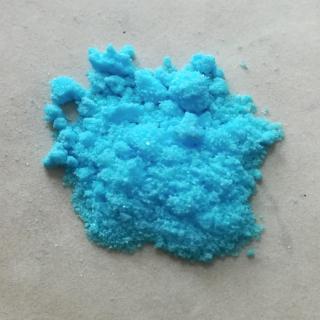

Bordeaux mixture is an effective fungus treatment authorized for use in organic farming.
It is widely used in the garden to treat plants, vegetables and fruit trees.
Following recommended doses and uses for this product is nonetheless necessary to avoid contaminating nature.
Basic Bordeaux mixture facts
Purpose and use – fungicide, algicide
Content – water, copper sulfate and lime
Most relevant plants – grape vine, fruit trees, potato, tomato
It is a blue-colored fungicide. Its main ingredients are copper and lime.
Spraying is the most common type of use, but sometimes people lather Bordeaux mix on trunks with a wide paintbrush. It helps fight most types of fungal diseases. Fungal diseases are due to mushrooms and fungus. Bordeaux mixture is often used against downy mildew, scab, fruit leaf curl, canker or European brown rot.
Recommended dosage is maximum ⅓ to ⅔ oz. (10 to 20 g) for 1 quart (1 liter) water. However, this depends on the concentration of the initial powder or liquid: be sure to read the label of the product you’re using.

It is often used in spring when diseases develop.
Bordeaux mixture is also used in fall after leaves have fallen off trees.
Preventive use is effective to defend against fungal diseases (mushrooms).
Most targeted diseases are:
It is almost useless to spray Bordeaux mix when the fungus has already appeared, because its main purpose is preventive.
But it can be argued that spraying when the disease has appeared can nonetheless contain its spread.
Treat fruit trees preventively in fall when the leaves fall.
Repeat the treatment at the end of winter after pruning to protect fresh wounds from contamination by fungus.
Starting in May, spray once every two weeks.
This treatment is a necessity because these vegetables are the most vulnerable to downy mildew, and contamination would compromise the harvest.
Even though using Bordeaux mix is possible in organic agriculture, a strong recommendation is to not increase the doses on product labels.
Also avoid using Bordeaux mixture too often, or in itself it will lead to contamination. Another alternative is to make your own fungicide from weeds, here are the best ones for that.
Studies actually show that halving doses results in almost the same effectiveness. Since this product, in the long run, is toxic, it’s a good idea to reduce doses in order to keep copper from leaching into the soil.
Where can one purchase Bordeaux mixtures to treat fungal problems on my pear trees? I only have three trees, are Kieffer and two Asian varieties.
Hi Fred, in garden stores they usually have ready-to-use mix or just-add-water liquids or powder. Sometimes the name differs but the content and ingredients include “copper sulfide”. There are also options to purchase online.
Copper sulphate not copper sulphide.